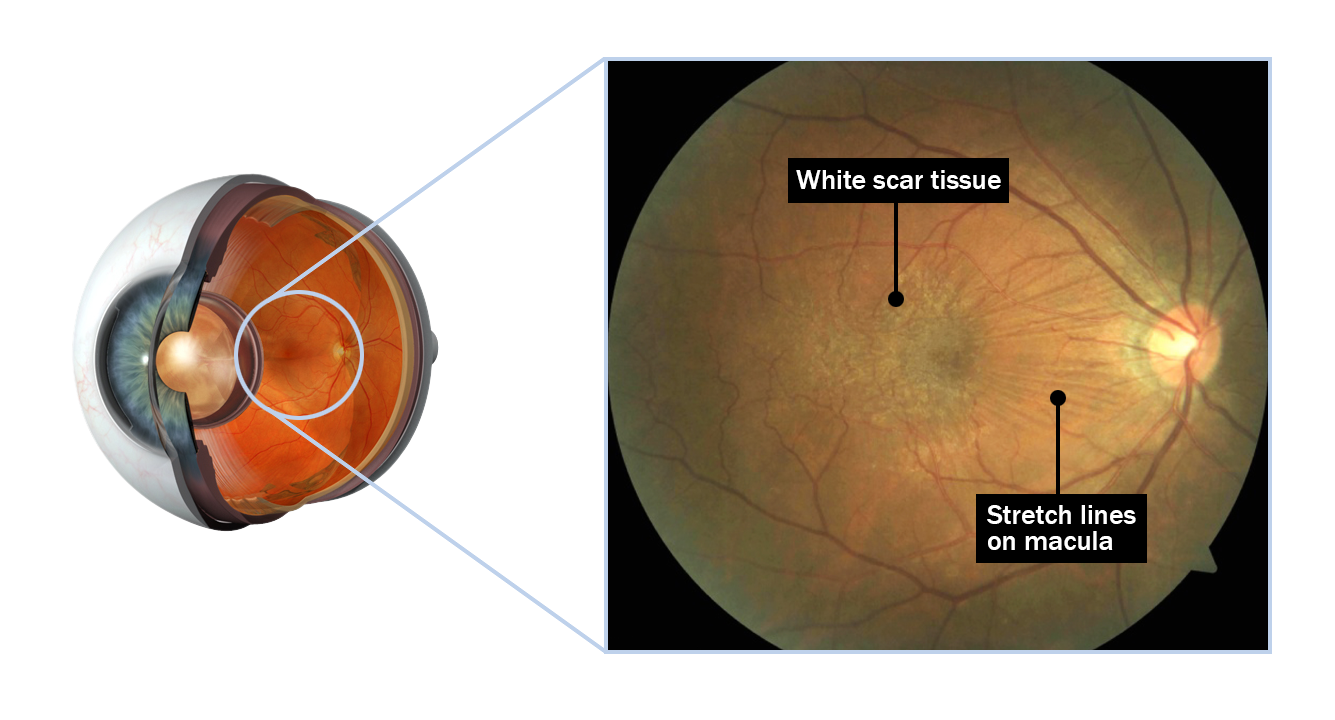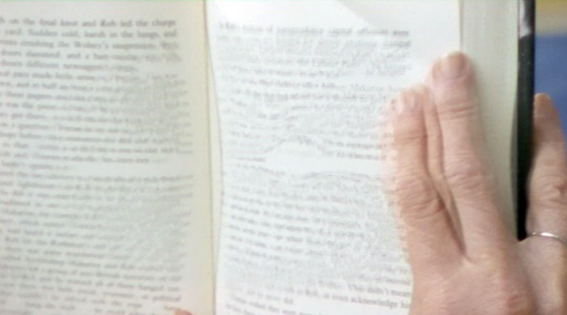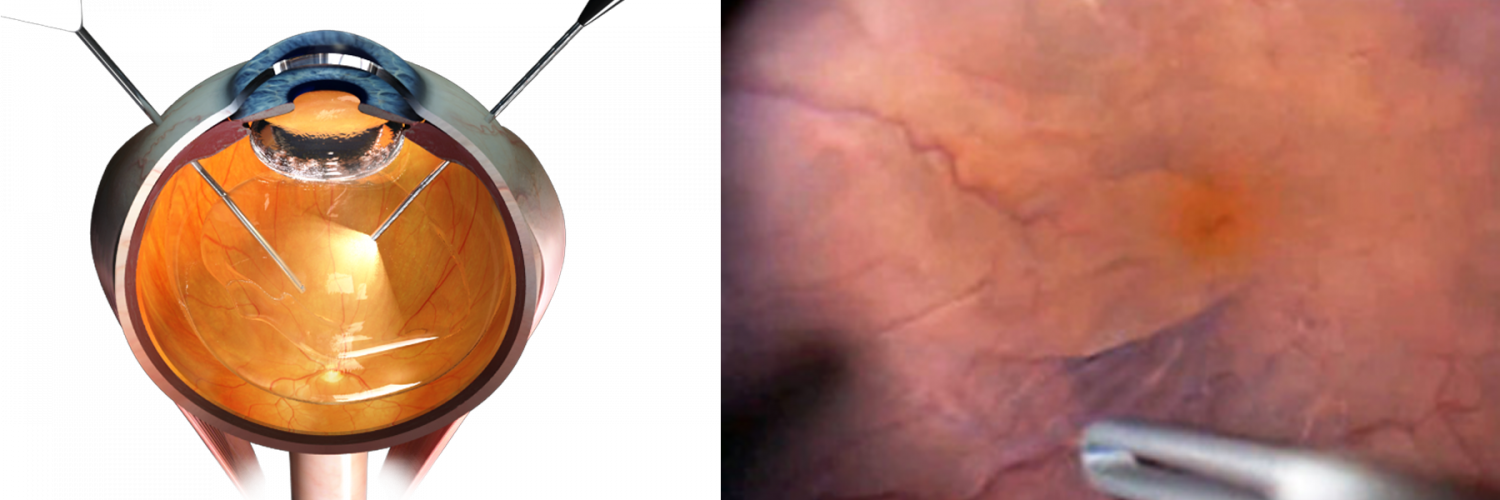Epiretinal membrane can also be called macular pucker, pre-retinal membrane, cellophane maculopathy, surface wrinkling retinopathy and pre-macular fibrosis. An epiretinal membrane results from a build up of scar tissue on the surface of the macula. As this membrane thickens, it causes the macula to become swollen and wrinkled resulting in blurred vision and distortion of images.
Retinal Photo of diabetic epiretinal membrane showing the scar tissue and puckering of the macula.

Epiretinal membrane can vary in impact from severe loss of vision to no loss of vision at all. Vision may become blurred or distorted and straight lines may appear wavy. Fine detail and reading small print may also become difficult.
Normal Macula OCT Scan

Epiretinal Membrane on OCT Scan

Leads to blurring and distortion

How is epiretinal membrane treated?
Many cases with mild visual symptoms do not require treatment and may just need monitoring. When your daily activities become affected by distorted vision from this condition, vitrectomy surgery is required. The procedure is performed under local anaesthesia with minimal discomfort. With modern techniques, sutures are usually not required.

During the procedure, the vitreous gel is removed through tiny holes made in the sclera. Epiretinal membrane is stained with dye and gently peeled off from the macula using fine forceps.
